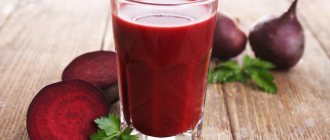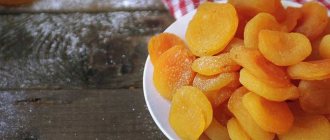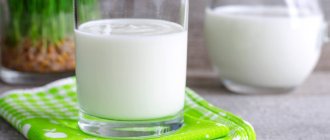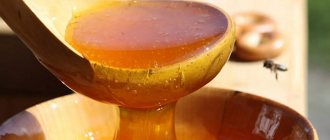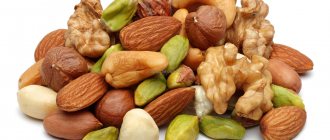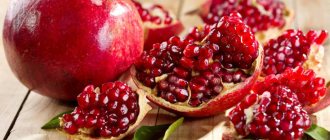The postpartum period when breastfeeding a child involves developing a special approach to preparing the nurse's menu. Red and bright foods, harmless in everyday life, can pose a potential danger to infants. Their aggressive pigments can lead to allergic reactions and pathologies of the newborn’s digestive system. Is beets useful or not when breastfeeding a baby, what is a safe portion of the root vegetable, how to prepare it correctly?
The initial period of life is one of the most critical stages for every mother and child. It is for this reason that the question deserves a separate approach: is it possible to have beets while breastfeeding in the first month of breastfeeding?
Properties of beets
The use of beets while breastfeeding a child is controversial among pediatricians, and reviews from parents are mixed. The question: is it possible to eat beets while breastfeeding a newborn is brought to light by comparing the beneficial and harmful effects of the root vegetable on a nursing mother and baby.
The advantages of beets during breastfeeding
For a long time, beets have occupied one of the leading places among vegetables in terms of their positive effect on the human body. Hippocrates classified this healthy vegetable as a medicinal product. During lactation, beets are of particular value.
Let's look at why the vegetable is beneficial for the body of the nurse and the baby:
- Helps normalize the functioning of the digestive system, resulting in better absorption of nutrients and beneficial components from food. This significantly improves the quality of breast milk.
- It has an excellent laxative effect, which is especially important for nursing mothers after childbirth. The problem of constipation can be resolved with the help of natural remedies - boil and eat beets. But the baby will not feel this, since the vegetable undergoes metabolism before reaching it.
- It has a bactericidal effect on the mucous membranes of the digestive system, which is manifested by the neutralization of pathogenic microflora and harmful substances.
- Effectively cleanses the liver and kidneys from excessive pollution, improves metabolism.
- Stabilizes blood pressure, especially if we are talking about high blood pressure.
- Supports normal bleeding by eliminating toxins and clearing blood vessels of cholesterol plaques. Prevents the formation of blood clots, improving overall blood circulation.
- Activates intellectual abilities, normalizes the functioning of the nervous system of a nursing mother and child.
- Helps in solving the problem of excessive weight gain. The root vegetable has a unique combination of calories and laxative properties. This is what can explain the presence of beets in almost all diets. For young mothers, these properties of the vegetable are the most valuable - many of them are puzzled by how to quickly restore their prenatal form. At the same time, the laxative effect does not affect the baby’s body.
- Increases hemoglobin levels - experts say that beets are most effective for these purposes. This feature is important for mothers who have had a difficult birth with large blood losses.
- Activates the immune system, which is especially necessary for a young mother after childbirth, because immunity drops significantly during the period of bearing a child.
- Helps get rid of anemia, promotes overall strengthening of the body.
- Promotes normal functioning of the thyroid gland.
- Participates in the formation and development of bone tissue.
The most compelling argument is that a nursing mother can eat beets without fear for the baby:
- The laxative properties of the vegetable do not have a negative effect on the digestive system of the newborn.
- Although beets have a bright red color, the vegetable is an exception to the rule. Its colored pigments do not have an allergic effect, so we definitely remove the vegetable from the list of prohibited foods.
- A minor allergy is possible only if the child’s individual body does not accept the product. It is recommended to refrain from introducing beets into the maternal menu.
Disadvantages of beets during breastfeeding
Do not forget that for any product there are contraindications for use:
- Since beetroot is rich in sugar, it should absolutely not be taken by diabetics.
- The presence of oxalic acid adds to the list of people with kidney and liver pathologies. At the same time, nursing mothers can consume beets, but it is important to strictly control their quantity.
- Beets make it difficult for the body to absorb calcium; it is not recommended for people with osteoporosis. However, a nursing mother can and even should eat beets; it is important not to combine the vegetable with foods containing large amounts of calcium.
- The root vegetable is not recommended for use by girls who have problems with the functioning of the genitourinary organs.
- For young mothers suffering from pathologies of the digestive system, it is important to consume beets or dishes made from them only after they have been subjected to heat treatment (fresh concentrated beet juice can lead to exacerbation of chronic diseases).
- Although beets are considered a neutral food, it is not recommended for a nursing mother to consume them during breastfeeding in the first month of a child’s life. The organs of the newborn’s digestive system are at the stage of formation; they are especially sensitive to the nutritional components supplied with breast milk.
Experts strongly recommend being as careful as possible when introducing vegetables into the menu of a nursing mother. Some of them claim that during lactation, beets are not a desirable vegetable at the initial stage of breastfeeding or even after the child reaches one year of age.
Most experts still say that it is possible and even vitally important for a nurse to eat beets when breastfeeding a newborn . Strictly adhere to the rules for introducing the product, do not exceed its quantity in the nurse’s menu.
The benefits and harms of beets during breastfeeding
When answering the question whether a nursing mother can eat beets, let’s consider the recommendations regarding the use of this red vegetable. The main reasons that raise doubts about the use of beets during lactation are:
- The vegetable contains fiber and pectin, the laxative properties of which will lead to stomach problems in the child.
- Red vegetables are strictly prohibited when breastfeeding.
However, these doubts can be easily dispelled by considering the following:
- The laxative property of beets is not transmitted through breast milk: the vegetable affects the bowel movement of the person who eats it. The fetus is digested in the body, and metabolic products enter the blood and breast milk.
- Beets are a hypoallergenic product, the consumption of which helps to obtain the missing vitamins and microelements. Boiled beets acquire special value during breastfeeding. Without causing allergies, colic and pain in babies, newborns and their mothers can thus improve their health. In this case, breastfeeding is established, and problems with the tummy in such cases are extremely rare.
Beetroot during breastfeeding has a number of advantages:
- normalizes digestion;
- contains natural antioxidants with bactericidal properties;
- removes toxins from the body;
- strengthens the immune system;
- due to the iron content it is a good prevention of anemia;
- increases hemoglobin levels;
- contains iodine, folic acid, vitamins E, C, PP, B;
- the magnesium contained helps strengthen the functioning of the heart muscle and normalizes blood pressure;
- Beetroot for a nursing mother is an excellent way to solve problems such as constipation and hemorrhoids.
The risk of possible allergies is present in newborns, so in the first month it is better for mothers to refrain from eating beets. It is better to start introducing it into the diet in the morning in order to observe the baby’s reaction throughout the day. Thus, this root vegetable has a beneficial effect on the health of the nursing mother, and therefore on the health of the baby. At the same time, you should not forget that to begin with, it will be enough to eat a small portion once a week.
Useful elements
100 grams of beets contain only 41 kilocalories, in addition:
- proteins – 1.5 grams;
- fats – 0.1 grams;
- carbohydrates – 8.8 grams.
Beets as such are an irreplaceable source of many vitamins, minerals, and other beneficial substances. Below is a table with the components and their effect on the body.
| Useful components | Effect of use |
| Vitamins: A | Improves vision, starts the rejuvenation process. Helps restore, improve and strengthen skin and hair. |
| IN 1 | Removes excess fatty components from the body. Promotes the normal functioning of the digestive system. Increases resistance to stress. |
| AT 2 | Reduces the amount of sugar in the body. Promotes normal metabolism. Eliminates peeling of the skin. Provides every cell of the body with sufficient oxygen. |
| AT 5 | Helps in solving the problem of cellulite. Helps strengthen the body. Accelerates recovery processes in the body. |
| AT 6 | Neutralizes itching of the skin and helps to quickly overcome nervous disorders. Balances cholesterol in the body. |
| AT 9 | Normalizes the state of the nervous system, improves performance. Strengthens the body's immune system. |
| WITH | Promotes the formation and strengthening of the body's immune system. Improves mood, eliminates depression and weakness. Helps increase energy potential. Helps with colds and viral pathologies. |
| E | This vitamin is also called “female” - it helps normalize hormonal levels and speed up recovery processes in the postpartum period. |
| RR | Helps maintain normal functioning of the vascular, cardiac, circulatory systems and liver. |
| Useful elements: calcium | Increases the strength of bone tissue and tooth enamel. Promotes normal blood clotting. Reduces blood cholesterol. |
| Potassium | Normalizes blood pressure levels. Helps activate the functioning of the brain. Performs the task of normalizing the functioning of the muscular system. Effectively eliminates allergic reactions. |
| Magnesium | Helps eliminate tension, eliminates spasmodic symptoms. Stabilizes the heart function. Takes part in the formation of bone tissue and tooth enamel. |
| Sodium | It is an effective blood pressure regulator and stabilizes the functioning of the cardiac system. Helps increase the overall endurance of the body. |
| Phosphorus | Takes part in energy metabolism. Helps improve memory, brain and central nervous system functioning. Participates in the formation and also helps strengthen bone tissue and tooth enamel |
| Sulfur | Eliminates pathogenic bacteria. Helps slow down the aging process. Participates in the normalization of the functioning of the digestive system. |
| Chlorine | Neutralizes puffiness. Stimulates the normal functioning of the liver, increases appetite. Reduces the amount of fatty components in the body. |
| Iodine | Promotes normal functioning of the thyroid gland. |
| Betaine | Promotes a general strengthening, tonic effect of the maternal body in the postpartum period. |
| Antioxidant complex | Experts say that these are the most effective means of inhibiting the aging process. |
| Folic acid | Helps maintain normal functioning of the vascular, cardiac, circulatory systems and liver. |
| Pectin and fiber | These components are an effective laxative that is safe for infants. |
How does early introduction of beets affect breastfeeding?
Let us divide the effect of early introduction of vegetables into the menu of a nursing mother into the effect in relation to mother and baby:
- Impact on a nursing mother when breastfeeding a newborn. Any food that a mother eats affects the quality of breast milk, beets are no exception. The vegetable has a laxative effect, this is especially useful in the postpartum period when constipation occurs, the fight against anal fissures, and postpartum hemorrhoids. Even boiled beets contain a large amount of vitamins, especially necessary for a woman in labor during the postpartum period. This is doubly significant if the birth was complicated and accompanied by significant blood loss. The root vegetable also effectively restores the amount of hemoglobin in the blood. Take the vegetable separately from calcium-rich foods, because... its components inhibit the body’s perception of the microelement.
- The effect of early introduction of beets on a newborn. For the baby, the beneficial components and vitamins of the vegetable have the same effect as for the nurse. One of the most significant problems encountered in infants is constipation, because... The organs of the digestive system are still at the stage of formation; they cannot synthesize a sufficient amount of the necessary enzymes. The occurrence of constipation in a baby can be caused by an incorrect diet of a nursing mother, poor environmental conditions, sleep disturbances, and stressful situations. One of the traditional medicine recipes suggests using it to solve the problem of constipation, both for the wet nurse and for the newborn. When a painful symptom appears in a newborn, you should not run for pills, ointments or suppositories. An effective folk remedy is a couple of pieces of boiled beets, consumed by the mother.
So can a nursing mother have boiled beets in the first month? We can confidently answer – it is possible and even necessary!

Rules for using beets during breastfeeding
In order for the root vegetable to have only a positive effect on the baby, its quantity in the nursing mother’s menu must be strictly observed.
Before introducing a vegetable into a nursing mother’s menu, it is necessary to consult with a specialist; this decision cannot be made alone.
Here are the main rules that help prevent negative effects on the newborn’s body:
- during the first 10 days, it is advisable to reduce the amount of beets in the nurse’s diet as much as possible;
- Eating a raw vegetable is prohibited; it may contain pathogenic microorganisms and bacteria; heat treatment also allows you to cleanse food of harmful compounds;
- the vegetable should be a component for first and second courses;
- Gradually increase the amount of beets in the mother's diet while breastfeeding, but no more than 20 grams per day.
Consumption of beets in the first month of breastfeeding.
Pediatricians recommend consuming no more than 50 grams of boiled or baked beets per day during the first month immediately after childbirth. This amount is enough for a newborn with breastfeeding to receive the entire complex of vitamins and nutrients. A baked or steamed vegetable retains almost all its beneficial components.
The root vegetable prepared in this way helps strengthen the immune system and has an anti-infectious effect. During this period, pediatricians do not advise eating beets every day, for starters - three times in 7 days.
In a month, the number of servings can be increased in the absence of negative symptoms, but no more than four times in 7 days.
A nursing mother can eat borscht while breastfeeding her newborn, but when preparing it, follow the following recommendations:
- do not use lard during cooking;
- prepare borscht only from dietary meat;
- When preparing a dish, refrain from using seasonings (especially hot ones), as well as garlic;
- at the final stage you can add sour cream, it is important that it is low in fat.
Carefully monitor the baby's body's reaction to the introduced dish; if there are negative symptoms or allergies, give up this food for a while.
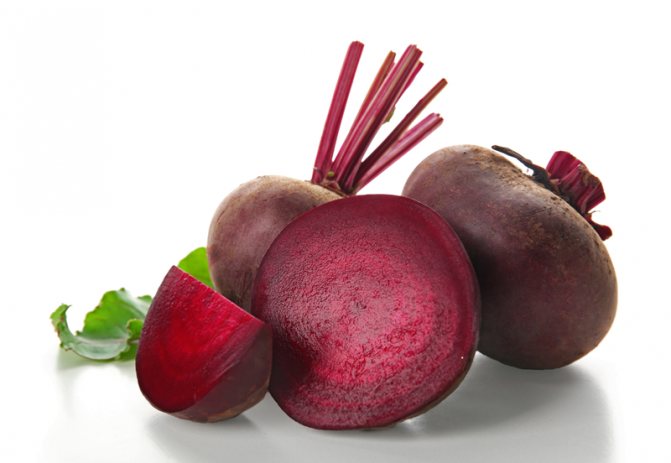
Consumption of beets in subsequent months of breastfeeding
What is important is what reaction the child had to the vegetable at the initial stage of breastfeeding. If no negative consequences are found, you can increase the amount of root vegetables in a mother’s nutritious diet during breastfeeding with virtually no danger.
In the second month of breastfeeding a newborn, you can increase the amount of beets in the mother’s daily menu to 200 grams.
Salads with the addition of sunflower, olive or other vegetable oil are well suited for the nurse's menu when breastfeeding babies. The vinaigrette can be used in the second or third months, replacing all questionable components (beans) with safer ones.
You can eat vegetables during lactation only after preliminary heat treatment - boiled, steamed, baked or stewed. Using heat treatment, you can neutralize almost all pathogenic bacteria, making the product tasty, healthy and as safe as possible.
Boiled vegetables have a much gentler effect on the mucous membranes of the digestive organs.
Raw beets have a negative effect on the body of a newborn, and sometimes can even provoke an infectious disease. It is recommended to consume raw root vegetables no earlier than the child reaches six months of age.
Particular attention must be paid to the choice of vegetable. Before cooking or using it, it should be washed thoroughly under running water. The ideal option is beets grown on your own plot. This way there is a guarantee that the vegetable contains no preservatives or chemicals.
Experts recommend eating beets systematically, but little by little. A small daily dose of the product helps to properly correct digestion and replenish the body of mother and child with a sufficient amount of vital components.
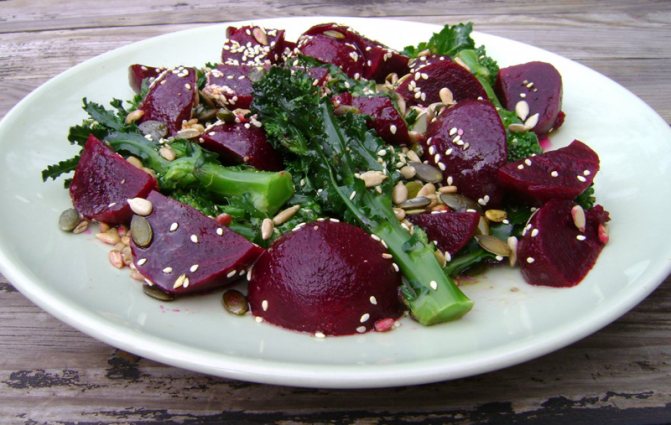
What's the best way to cook beets while breastfeeding?
Nursing mothers can eat beets, but it is better to boil them before eating.
Raw, due to the abundance of coarse fiber, is poorly absorbed by the body and therefore women may experience problems with the gastrointestinal tract and pancreas. Boiled or baked has a milder effect on the intestines. It is allowed to introduce boiled beets into your diet during breastfeeding in any form. You can simply grate it and eat it, adding a little salt and vegetable oil. Can be included in other dishes. For example, cook beetroot soup. Or make an incredibly delicious beet salad with prunes, walnuts, grated cheese and sour cream.
However, daily consumption of beets while breastfeeding is not advisable. Still, the coloring pigment is present in it and accumulates in the mother’s body with very frequent use. In rare cases, this may subsequently trigger an allergy in the child.
Allergy to beets in a child
A small amount of boiled beets cleanses the body of a nursing mother, solving the problem of constipation. The vegetable does not have a negative effect on the digestive system of a newborn; in addition, it reduces the amount of gases produced and stabilizes the frequency and fractional composition of the child’s stool.
Here are the most important rules that must be followed strictly:
- The vegetable can be fully introduced no earlier than after 30 days of breastfeeding.
- After trying a small amount of beets, watch the child’s body’s reaction especially carefully for three days. If an allergic reaction or negative symptoms are detected, the vegetable is immediately removed from the mother’s diet; the vegetable should not be reintroduced until the child reaches five months. Violations in the frequency and fractional composition of stool can also be observed in the wet nurse. Slight redness of the stool is considered normal and is not considered a negative effect.
- Remember the appropriate vegetable norm for each of the periods of breastfeeding. Violating the recommended amount carries with it many side effects for the nursing mother and baby - from diarrhea to poisoning.
Dishes containing beets have a positive effect on the functioning of the mucous organs of the digestive system of the nurse and baby.

Komarovsky's opinion
Authoritative pediatrician Komarovsky gives a reasoned answer to the question: “Can a nursing mother have boiled or raw beets?”
To summarize the extensive answer, let's reduce it to a set of recommendations:
- When forming a nutritious diet for a mother while breastfeeding a newborn, beets are an indispensable vegetable necessary for adequate nutrition.
- However, when introducing a vegetable into the nurse’s menu, it is necessary to carefully monitor and take into account the reaction of your body and the child’s acceptance of it.
- To reduce the likelihood of negative consequences from consuming root vegetables, it must be exposed to heat in one way or another. The vegetable in its raw form contains extremely aggressive components. Concentrated vegetable juice in undiluted form can lead to negative consequences for the body of mother and baby.
- Raw root vegetables are completely safe only after the baby has finished breastfeeding.
Komarovsky categorically does not recommend giving up eating beets.
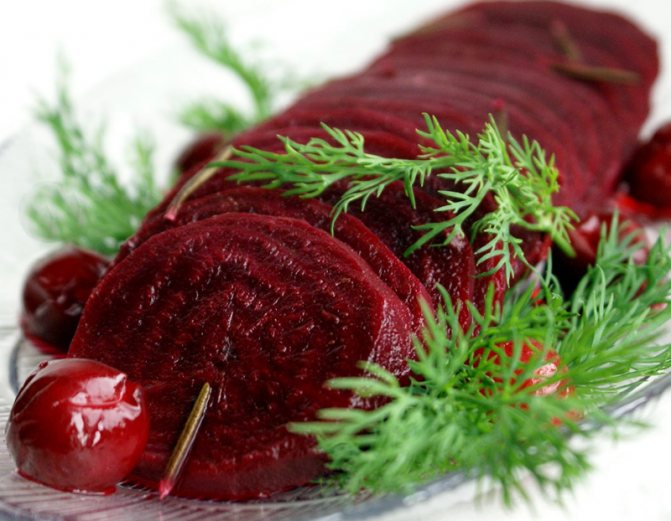
Doctor Komarovsky's opinion
Evgeniy Olegovich believes that a woman’s diet after childbirth should be complete. You should only limit the consumption of alcohol, nicotine, smoked, salty, and fried foods. Boiled beets are allowed during breastfeeding.
If mother and baby have no pathologies, the red root vegetable is eaten immediately after discharge from the hospital. But it is important to heat-treat the vegetable. Raw beets are prohibited when breastfeeding. The fresh fruit is eaten at the end of lactation.
Principles of cooking beets
Experts say that the benefits of vegetables directly depend on the method of processing.
Acceptable options for breastfeeding a baby include:
- You can eat boiled vegetables without fear;
- An excellent option is to bake the beets in the oven, having previously wrapped them in foil;
- regular porridge can be seasoned with small pieces of boiled root vegetables;
- borscht, some soups cannot be prepared without beets, breastfeeding is not a hindrance;
- many salads involve the use of exclusively approved components for breastfeeding; these dishes can be seasoned with boiled vegetables;
- It is recommended to prepare dishes from root vegetables using a multicooker;
- the simplest solution is boiled beets, with the addition of low-fat sour cream, olive or sunflower oil, yogurt;
- To prepare tasty and healthy dishes, don’t be afraid to get creative – combine vegetables (preferably stewed).
To go directly to the practical part, you need to remember a couple of important rules:
- When cooking, minimize the amount of salt;
- beets are often cooked seasoned with garlic - during the period of pregnancy you should forget about this option;
- store-bought mayonnaise should also be excluded from ingredients for cooking;
- vegetable oils (olive, sunflower or flaxseed) are added immediately before consuming the dish;
- immediately before cooking, thoroughly wash the vegetable under running water;
- You should not use seasonings (especially hot ones) when preparing dishes;
- To prepare dishes on the menu of a nursing mother, fresh, high-quality products are needed - beets are naturally no exception.
Feel free to add beets to the nurse's menu, but remember the rules, tips and recommendations provided. By following them, a nursing mother will restore the body in a short period of time and supply breast milk with the entire complex of necessary vitamins and nutrients. This promotes the full growth and development of the baby from the first moment of life.
Now all you have to do is arm yourself with a dozen recipes for delicious and healthy dishes containing beets, processed in one way or another, as a component.
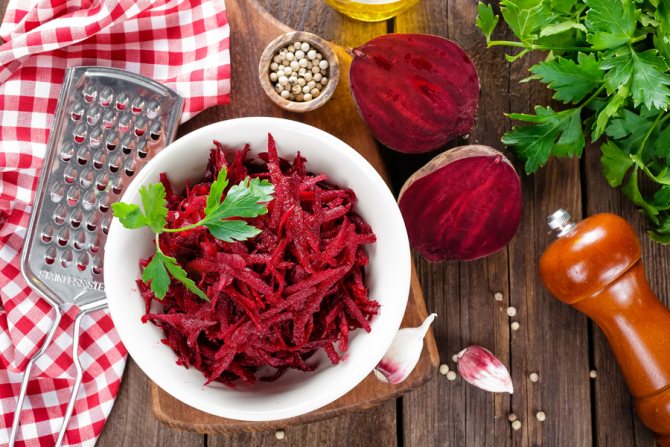
Recipes for dishes with beets for nursing mothers
Borsch
Recommended after 2 months of a child's life.
Ingredients: 1 medium beet, 3 potatoes, 1 small onion, 1 small carrot, low-fat meat broth, bay leaf, salt.
Preparation: Prepare meat broth (chicken breast, beef or rabbit) in advance. Peel all the vegetables. Dice the onion, potatoes and beets. Grate the carrots on a coarse grater. Place all the vegetables in the boiling broth, salt them, add bay leaf. After boiling, skim off the foam, reduce the heat and cover the soup with a lid. Simmer it until fully cooked.
Many people are interested in whether a nursing mother can have borscht with beets and cabbage? You can cook borscht with the addition of white cabbage. It is important that each new product is introduced into the mother’s diet separately.
The vinaigrette
Recommended after 5 months of a child's life.
Ingredients: 1 medium carrot, 2 potatoes, 1 beet, 1 onion, 200 grams of canned peas, vegetable oil, salt.
Preparation: Wash the potatoes, carrots and beets. Boil them in their skins. Cool and peel all vegetables. Cut into cubes. Add peas to vegetables. Mix everything. Season the salad with oil, salt and mix again.
Some people like to add garlic to salads. There is nothing dangerous in garlic for the baby, except for one thing: the spicy smell can get into breast milk. If you eat a lot of garlic, the baby may completely refuse mother's milk.
Watch a video on how easy it is to bake beets in the oven:
Recipes with beets
There are many recipes for dishes with red beet aimed at the breastfeeding period; they add variety and make the menu complete. Vitamins that are destroyed by heat can be obtained from well-diluted vegetable juice.
Thermal effects of plant fiber are not so terrible, so feel free to prepare borscht, soups, vegetable stews and salads.
Here are recipes for popular dishes with beets.
Beet caviar
To prepare you need:
- one large beet tuber;
- olive or sunflower oil – 1 tablespoon;
- lemon juice - half a teaspoon;
- sugar (cane), salt.
Stages:
- Fill a saucepan with water, add thoroughly washed beets, and place on high heat.
- Cook until the vegetable is cooked; you can cut it to simplify the process.
- The cooked vegetable must be grated on a fine-grained grater.
- The resulting product must be placed in a frying pan greased with olive or sunflower oil.
- Add lemon juice, salt and sugar according to taste.
- Stir and simmer the resulting mixture over low heat for half an hour. Periodically, the dish must be thoroughly mixed.
Beetroot recipe
To prepare the dish you will need:
- one medium-sized beet tuber;
- lean beef – 300 grams;
- potatoes – 2 medium size;
- sunflower or olive oil – 1 tablespoon;
- cane sugar, salt;
- greens (whatever you have);
- low fat sour cream as a dressing component.
Stages:
- Fill a saucepan with water, add thoroughly washed beets, and place on high heat. Cook until the vegetable is cooked.
- At the same time, you need to prepare the meat broth. To do this, fill the pan with water, add the pre-prepared meat, and cook until done.
- Cut the potatoes into convenient size pieces (recommended into strips), salt according to your taste preferences.
- Remove the meat, throw the chopped potatoes into the meat broth, add sunflower or olive oil.
- It is recommended to grind meat in the same way as potatoes.
- About 5 minutes before the potatoes are ready, add the pre-chopped beets into the pan.
- Lean beef is an excellent addition to the second course.
- Immediately before use, it is recommended to add low-fat sour cream and fresh herbs to the dish.
For information, green parsley in combination with dill promotes good lactation. However, caution should be exercised as this food may cause an allergic reaction in a newborn.
Beet salad with nuts
To prepare the dish you will need the following ingredients:
- one medium-sized beet;
- small onion;
- sunflower or vegetable oil;
- prunes;
- Walnut.
Stages:
- Fill a saucepan with water, add thoroughly washed beets, and place on high heat.
- Cook until the vegetable is cooked, peel it and grate it on a coarse grater.
- Chop the onion into small pieces and pour boiling water over them.
- Bite, peel and finely chop the walnut core.
- Mix all the ingredients thoroughly, add olive or sunflower oil.
- To obtain a more piquant taste, add finely chopped prunes to the dish.
Cauliflower borscht
When preparing this dish you will need the following ingredients:
- a piece (300 grams) of dietary beef or pork;
- one medium beet;
- medium bulb;
- cauliflower;
- potato;
- carrot;
- salt.
Stages:
- Fill the pan with water, place the meat in it, and simmer the meat until cooked.
- Cut the potatoes into cubes of a convenient size, chop the onion and add the ingredients to the infused meat broth.
- Grind the beets and carrots using a coarse grater, remove the inflorescences from the cauliflower and place the ingredients in a common saucepan.
- Add salt according to taste preference.
- Immediately before eating the dish, you can season it with sunflower or olive oil.
Baked beets with nuts and prunes
The dish consists of the following components:
- beets – large size possible;
- almond or walnut core;
- prunes.
Stages:
- Wash the beets thoroughly under running water, peel and cut into rings.
- Nuts and prunes also need to be chopped.
- Next, you need to lay out the components on the foil in the following sequence - a layer of beets, prunes, nuts.
- Alternate layers until you run out of ingredients.
- Wrap the resulting mixture well again with foil and place in the oven for a quarter of an hour.
- The readiness of the dish is assessed using a fork or toothpick, trying to pierce the beets.
Beet salad with cheese
The following products are required:
- beet;
- hard cheese;
- salt;
- dried apricots or other dried fruits;
- nuts or almonds;
- low fat cream.
Stages:
- Fill a saucepan with water, add thoroughly washed beets, and place on high heat. Cook until the vegetable is cooked.
- Cut the boiled beets and hard cheese into convenient small cubes.
- Soak nuts and dried fruits in boiling water. Grind nuts, dried apricots and dried fruits with the rest of the ingredients.
- Mix all ingredients thoroughly, salt the dish according to your taste preferences.
- For information, eating dried apricots and other dried fruits are the most useful and nutritious components during lactation.
- Immediately before eating, the salad is seasoned with low-fat cream.
Stuffed beets
Ingredients of the dish:
- rice;
- raisin;
- beet;
- low fat cream - one tablespoon;
- sugar – one teaspoon;
- butter - half a teaspoon.
Stages:
- Fill a pan with water, heat to a boil and add rice, cook until fully cooked.
- Raisins must first be steamed in boiling water.
- Fill a saucepan with water, place the beets, thoroughly washed under running water, and place on high heat.
- Cook until the vegetable is cooked. Remove the inside of the boiled beets and replace it with rice mixed with raisins.
- To prepare the gravy, mix low-fat cream, sugar and butter.
- Mix all ingredients thoroughly until a homogeneous mixture is obtained.
- Pour the gravy over the stuffed beets, place in the oven and bake for half an hour at 180 degrees.
- This dish is original - it is healthy and will add variety to the menu of a nursing mother.
Meat and beet salad
To prepare the dish you need the following ingredients:
- lean chicken or turkey;
- beet;
- carrot;
- eggs – preferably quail;
- walnuts;
- raisin;
- low-fat cream or natural yogurt.
Stages:
- Fill a pan with water, put dietary meat in it, and cook until cooked. Afterwards, you need to cut the boiled meat into small cubes.
- Fill a saucepan with water, add thoroughly washed beets, carrots and eggs. Place over high heat and cook until everything is cooked.
- Finely chop and add to meat.
- Pour boiling water over the raisins and walnuts and let sit. Chop the walnuts and add the raisins to the container for a common dish.
- Low-fat cream or yogurt made from natural ingredients are perfect for dressing the dish.
- Particular care must be taken when using eggs; do not eat more than one boiled egg per day; you can eat no more than two in 7 days.
There is an option that is similar in energy value, but less dangerous - we are talking about quail eggs.
When breastfeeding a newborn, beets are not considered prohibited foods. However, there are many nuances and rules for the correct introduction of vegetables into the nurse’s menu. It is always necessary to remember the recommended daily intake; it is strictly forbidden to eat fresh beets. Carefully monitor the reaction of the child’s body, do not hesitate to contact a specialist if you have any doubts.
